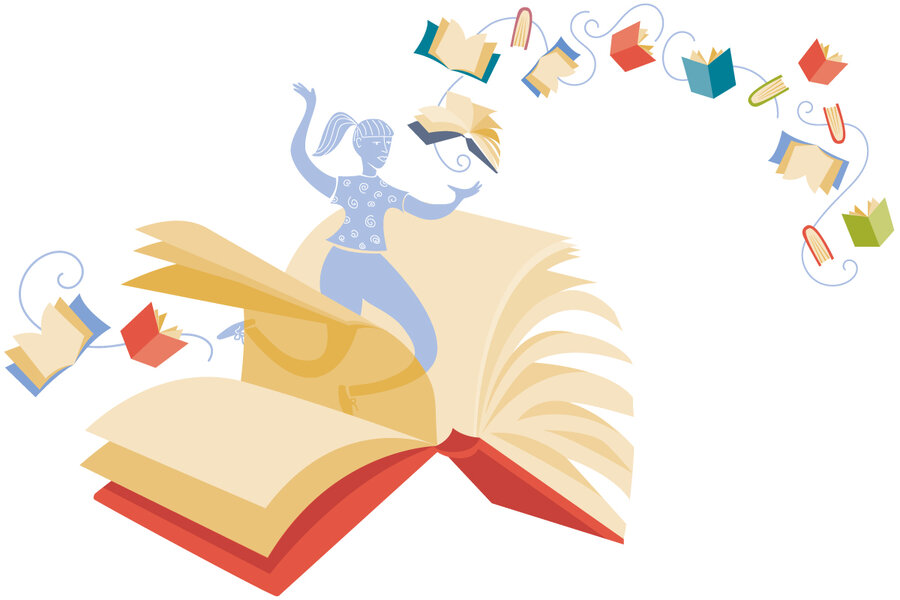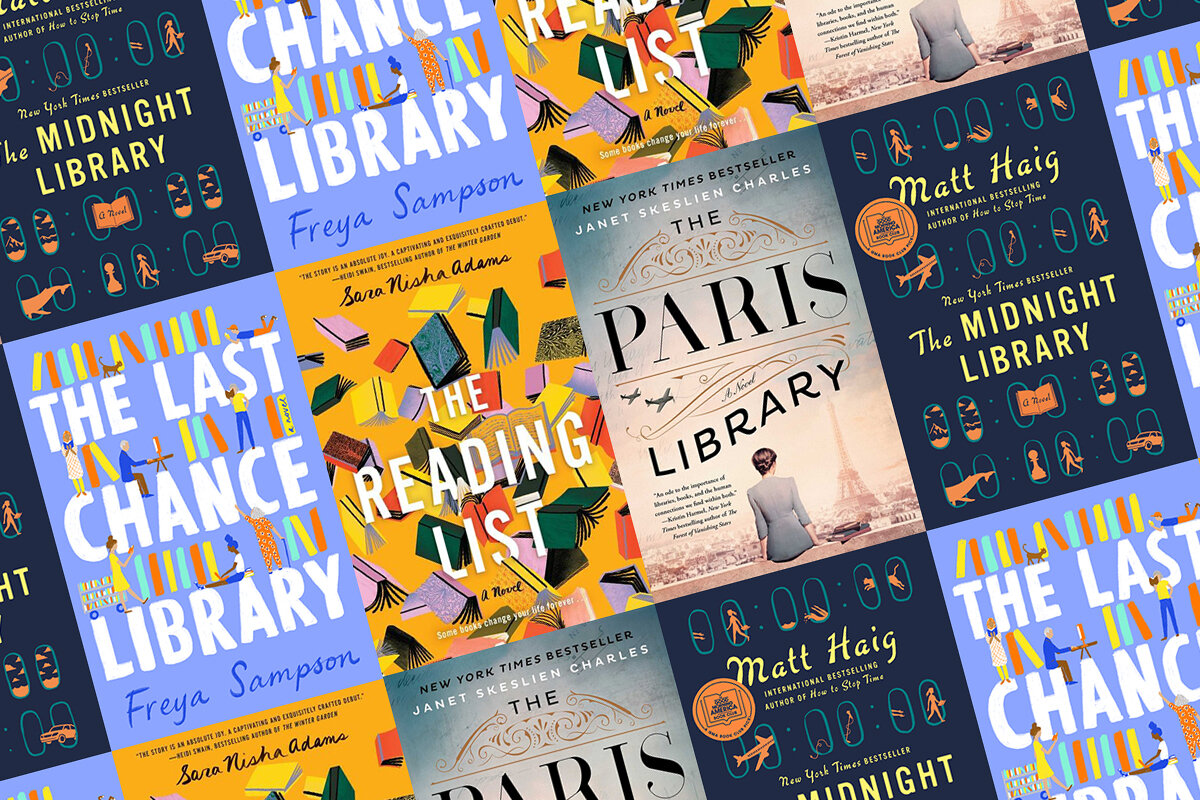Set among the stacks: Four enchanting novels for bibliophiles
Loading...
From the ancient Greek Athenaeum to your cozy local reading room, libraries have long served as a refuge for longtime book lovers and new readers alike. But a place to borrow books is just the beginning – for many people, a library is a place of opportunity, learning, and self-discovery.
“Libraries of all kinds are key to the vitality of communities,” according to Patty Wong, president of the American Library Association. “If the past year has taught us anything, it’s that America’s libraries are nimble enough to meet changing local needs and foster community resilience.”
The keepers of these libraries are often unsung heroes who deserve praise. Four recent outstanding novels look inside these mighty institutions to celebrate the joy of books, the inspirational power of storytelling, and the ways that library communities can uplift lives.
Why We Wrote This
Why do we love libraries? They are places of refuge, learning, and personal discovery. But their most vital role may be in the building of community, as explored in four captivating novels.
A righteous fight
Freya Sampson’s winsome novel, “The Last Chance Library,” takes place in a small English village, where the local Chalcot Library is about to lose its funding. June Jones, a shy and lonely 20-something library assistant (and daughter of the town’s late legendary librarian) finds blessings in believing in herself, as she takes on the task of fighting to keep the library open with the help of a host of quirky co-workers and library patrons. From Stanley Phelps, a kindly fan of World War II novels who practically lives in the library, to an array of townsfolk, June finds a sense of family in friendships she never knew she could have.
“Libraries aren’t just about books,” our narrator reminds us. “They’re places where an eight-year-old boy can have his eyes opened up to the wonders of the world, and where a lonely eighty-year-old woman can come for some vital human contact. Where a teenager can find precious quiet space to do her homework and a recently arrived immigrant can find a new community.”
June’s reconnection with an old school chum who’s visiting town is charming. Sampson’s storytelling is refreshingly Capraesque, with messages that ring out for finding purpose, connection, and joy in embracing community and following one’s dreams.
Literary healing
In “The Reading List,” Sara Nisha Adams’ captivating novel, a mysterious book list discovered within the pages of Harper Lee’s “To Kill a Mockingbird” changes lives. An endearing West London widower and nonreader, Mukesh, anxiously wishes to connect with his granddaughter through books, just like his cherished late wife did. Summer library assistant Aleisha is a distraught teenager who is balancing a challenging home life. When the unlikely pair form a book club, they discover incredible stories and characters that help lift them out of loneliness and grief. “Piles and piles of books,” Adams writes. “It was as though they were floating all around him, lifted up by some kind of magic, offering up new worlds, new experiences. It was beautiful.”
Adams’ book shines with a bighearted cast finding rejuvenation in books and the community. The book explores issues of mental health, and Adams’ emotionally finely tuned prose shows a trending toward peace, even after unexpected tragedy. “The Reading List” is an ode to the power of stories and the enchantment of reading.
Real-life heroes
This third library novel brings World War II into its landscape, honoring librarians who worked for the American Library in Paris during the Nazi occupation. Risking their lives, these librarians smuggled books to isolated soldiers and Jewish patrons who had been banned from visiting libraries. In Janet Skeslien Charles’ stirring tale of courage, “The Paris Library,” the high stakes underscore the power of books: “No other thing possesses that mystical faculty to make people see with other people’s eyes. The Library is a bridge of books between cultures,” she writes.
The novel is filled with fascinating facts about the real-life American Library, engagingly narrated by young librarian Odile Souchet, whose twin brother is sent off to fight in the war. Charles, herself, worked at this library as programs manager, and integrates moving portrayals of actual staff members such as Dorothy Reeder, director of the library; Boris Netchaeff, its head librarian; and others.
Alternating chapters are voiced by Lily, a lonely teenager who befriends Odile decades later in 1983 Montana. Their unlikely friendship reveals lessons about longing, loss, and navigating hardship. Bibliophiles will adore this remarkable historical library tribute.
Soul-searching
Each of these stories uniquely captures the rewards that books can bestow upon individuals and communities. Matt Haig’s dazzling bestselling novel from last year, “The Midnight Library,” goes a step further by creating an imaginative modern fable with nods to “It’s a Wonderful Life.”
Nora Seed is a 35-year-old woman who feels she’s failed miserably at life, and regrets just about everything. After she finds herself at a magical library helmed by the ever-wise Mrs. Elm (Nora’s grade school librarian aka guardian angel), her enlightenment begins. Nora starts choosing “books” that all revolve around lives she could have lived. She becomes an Olympic swimmer, a glaciologist, a rock star, and more. “Librarians have knowledge,” Haig writes. “They guide you to the right books. The right worlds. They find the best places. Like soul-enhanced search engines.”
Haig’s adventurous storytelling is profound. Nora arrives exactly where she needs to be, having gained greater perspective, forgiveness, and gratitude.







